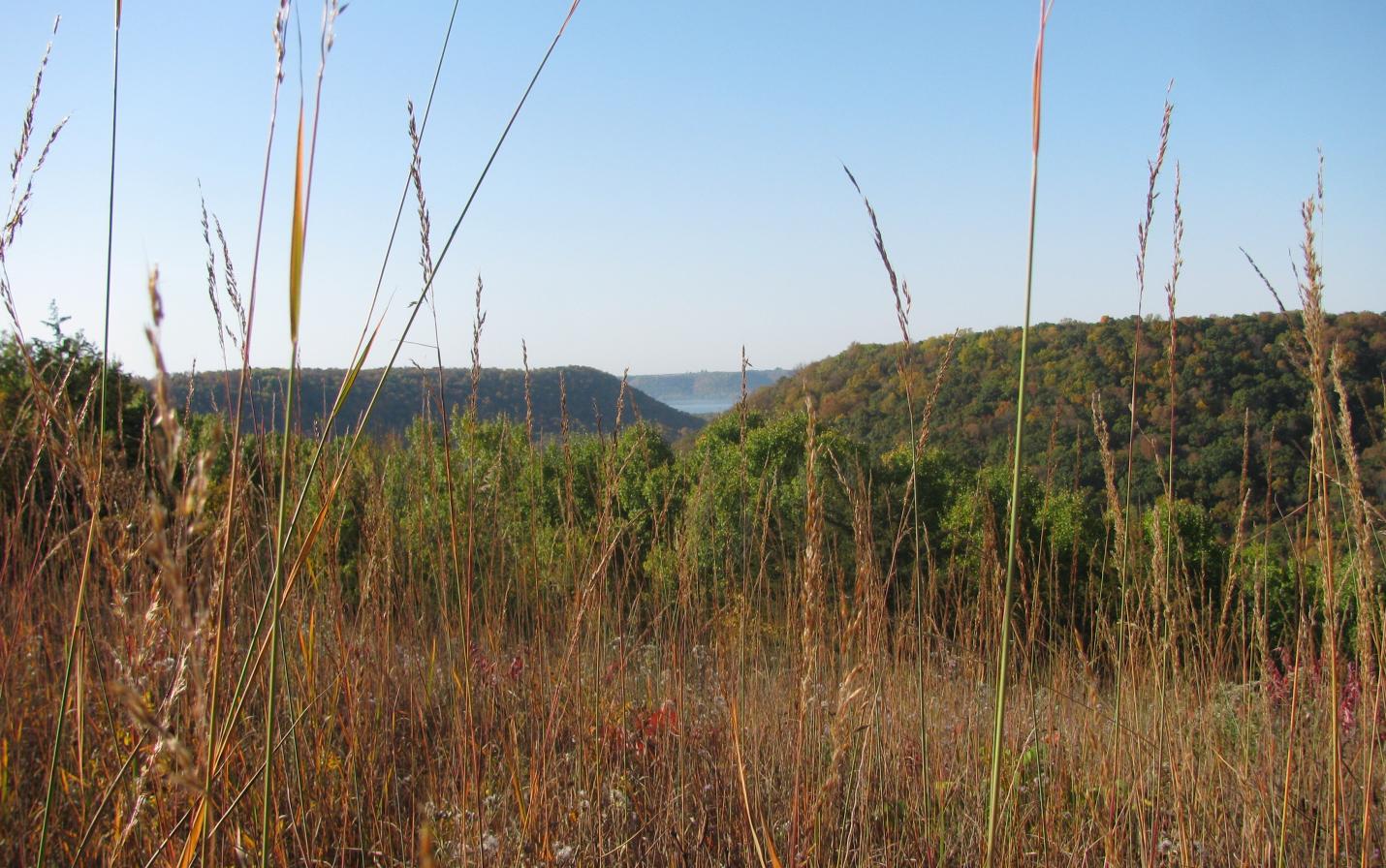
A drive the through the Mississippi River Valley now features brilliant fall colors, and a short distance east of Ferryville, the Mississippi Valley Conservancy has ensured 189 acres of scenic bluffland will remain intact for future generations.
The conservancy completed a conservation agreement with Ken and Deneen Kickbusch, Thursday, Oct. 20, to permanently protect their 189-acre farm and bluffland. The voluntary conservation agreement protects the scenic beauty and wildlife habitat by limiting future subdivision, development, mining, and other unsustainable activities that are inconsistent with the landowners' wishes. The land remains in private ownership and is not open to the public.
“The animals and the birds don’t always have contiguous habitat, and our land can make a difference for the wildlife,” Deneen said. “We have so many great memories here.” Their memories include hunting trips with sons and grandsons, camping within view of the Mississippi River, working in the prairie, serenades by whippoorwills, and startling wood ducks out of the ponds.
“Ken and Deneen have been so thoughtful about the use of their land and the future of that land. We are honored to be a part of realizing their dream to protect the wildlife and its habitat,” Carol Abrahamzon, executive director for the conservancy, said.
The Kickbuschs bought the land in 1976, attracted to the rural character, the lack of buildings, and the wildlife. The land is a mix of agricultural land and wooded bluffs, with the steep rugged topography characteristic of the Driftless Area. Ken and Deneen recognized the importance of land preservation, watching changes to the landscape as commodity prices rise, stating, “a conservation easement would provide the kind of protection that this highly erodible land deserves."
Nationwide, an acre of farmland is lost every minute from conversion to other land uses. Over the years, terraces and water retention ponds were added to the Kickbusch property to address soil erosion and runoff. “When we bought the property, we restored the ponds," Ken said, “which were as full this year as they have ever been, and always used by the wood ducks. Once, I counted 16 wood ducks flying out of the pond.”
The land also includes several “goat” prairies, labeled as such because the early settlers thought they were so steep, only a goat could climb them. The prairies include the same wildflowers and grasses that were present here 200 years ago. The agreement with the conservancy ensures that habitat remains intact for wildlife, and future owners honor the conservation practices within the farmland.
“There is just too much abuse of the land, devastating local communities, rivers, wildlife,” Ken said. “We felt this was something solid, something real we could do for the future." “The Kickbuschs' land provides a great example of how little is known about the habitat right here in our backyard,” said Abbie Church, conservation director for the conservancy. “As we walked through the prairie, we found a small stalk of snow-white blooms, and a Great Plains Ladies Tresses Orchid. We walked on to find five other stalks. This orchid was recently added to the Wisconsin DNR’s list of species of 'Special Concern' and the University of Wisconsin herbarium has no previous records of this orchid being found in Crawford County. One week later we found yet another species of rare orchid, this time in the woods, another new record for Crawford County.”
The prairie today is in great shape due to Ken and Deneen’s efforts. “Fifteen years ago Ken went out and cut the red cedars in the prairie,” Deneen said. “It looks much better today than ever before; the prairie is so beautiful."
The conservancy, founded in 1997, has permanently protected over 17,500 acres of farms, bluffs, prairies, forests, wetlands and streams for their wildlife habitat, ecological diversity, scenic beauty, and for public recreation, environmental research, and outdoor education. Of that acreage, the conservancy has conserved more than 4,000 acres of land that is open for public use, including hiking, hunting, fishing, canoeing, snow-shoeing and bird-watching.